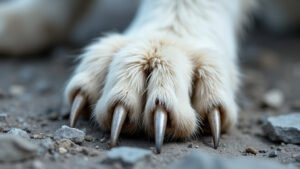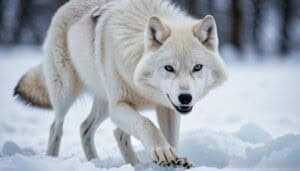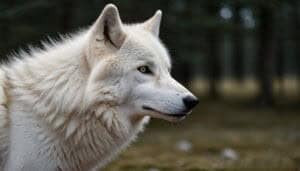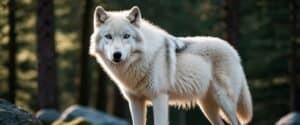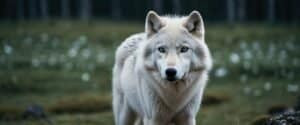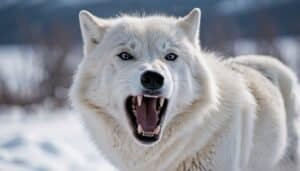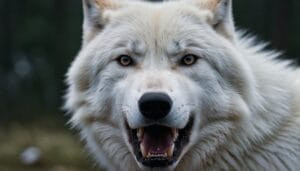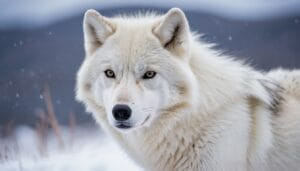Introduction
The Arctic wolf, a majestic predator inhabiting the northernmost regions of our planet, has intrigued scientists and wildlife enthusiasts alike. One of the key characteristics of these elusive creatures is their shoulder height, which plays a crucial role in their behavior, survival, and adaptation to the harsh Arctic environment
In this article, we will explore the average shoulder height of the Arctic wolf, examining how it compares to other wolf subspecies and the factors that influence it. We will delve into the differences between males and females, the growth and development of wolf pups, and how shoulder height impacts their hunting strategies and overall survival
Additionally, we will discuss the techniques used by researchers to measure these wolves in the wild and the health issues that may affect their growth. Join us as we uncover the fascinating details about the Arctic wolf’s shoulder height and its significance in the animal kingdom
Average Height of an Arctic Wolf at the Shoulder
Arctic wolves, also known as white wolves, are renowned for their resilience and adaptation to one of the planet’s most extreme environments. A key aspect of their physical stature is their shoulder height, which influences their mobility, hunting techniques, and overall survival in the harsh Arctic conditions
Understanding the average shoulder height of these wolves provides valuable insights into their biology and behavior
Understanding the Arctic Wolf’s Physical Characteristics
The Arctic wolf is a subspecies of the gray wolf, characterized by its white fur, which offers camouflage in snowy surroundings. They are built robustly to endure freezing temperatures and long periods of scarcity. The shoulder height is a significant physical characteristic, offering clues about their adaptability and lifestyle
Average Shoulder Height Measurement
On average, adult Arctic wolves stand between 25 to 31 inches (63 to 79 cm) at the shoulder. This height allows them to navigate through deep snow and cover large territories in search of prey. Male Arctic wolves are typically on the larger end of this spectrum, whereas females tend to be slightly shorter
Factors Influencing Shoulder Height
Several factors contribute to the shoulder height of Arctic wolves:
Genetic Factors: Genetics play a crucial role in determining the physical attributes of Arctic wolves. Specific genes influence growth patterns, resulting in variations in shoulder height among individuals
Environmental Conditions: The environment has a profound impact on the growth and development of Arctic wolves. Pups born during harsh winters may experience different growth rates compared to those born in milder conditions, affecting their shoulder height as adults
Understanding these factors helps researchers predict changes in wolf populations and their adaptation strategies in response to environmental shifts
Comparisons and Differences
To truly understand the uniqueness of the Arctic wolf, it is essential to compare its physical characteristics with those of other wolf subspecies. By examining these differences, we can gain deeper insights into the adaptations and behaviors that set the Arctic wolf apart
This section will explore how the shoulder height of Arctic wolves stacks up against gray wolves and timber wolves, as well as the distinctions between male and female Arctic wolves
Comparison with Other Wolf Subspecies
Shoulder Height of Arctic Wolves vs. Gray Wolves
When comparing Arctic wolves to their more common relatives, the gray wolves, one can notice several differences in shoulder height. Gray wolves, found in a variety of environments, typically have a different stature that reflects their diverse habitats
We’ll look at the average measurements and discuss how these variations contribute to their respective lifestyles
Differences with Timber Wolves
Timber wolves, another close relative, present a unique comparison. These wolves, primarily found in forested areas, show different adaptations in their shoulder height compared to the Arctic wolves. This subsection will highlight these differences and discuss what they mean for their survival and hunting strategies
Sexual Dimorphism in Shoulder Height
Male vs. Female Arctic Wolves
Sexual dimorphism, or the differences in physical characteristics between males and females of the same species, is particularly evident in Arctic wolves. This part will delve into the distinctions in shoulder height between male and female Arctic wolves, explaining how these differences arise and what roles they play in their behavior and social structure
Role of Hormones in Growth
The growth patterns of Arctic wolves are heavily influenced by hormonal changes, especially during their developmental stages. In this subsection, we’ll explore how hormones impact the shoulder height of both male and female wolves, and what this means for their growth rates and physical development


